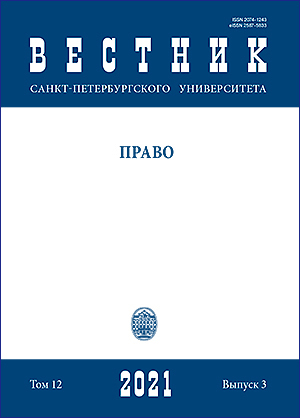Limits of criminal law regulation of robotics
DOI:
https://doi.org/10.21638/spbu14.2021.303Abstract
The article analyzes the current state of intersectoral relations in the legal regulation of robotics. The author points out the complementarity and consistent integration of legal processes occurring in civil, administrative and criminal law into a single system. The connection between civil law institutions, in particular the institution of reparation and liability insurance with the provisions of criminal law is essential for the establishment of an effective criminal justice system of regulation using robotics and the construction of relevant norms. The study concluded that the main criterion distinguishing civil law torts with the use of robotics from criminal offences is the degree of public danger of these acts and the extent of damage caused from the consequences that have occurred. Civil liability for damage caused by robotics does not preclude administrative or criminal liability. The author presumes that there are no mechanisms in civil law to hold software developers for robots accountable, which is a serious omission in the context of the growing autonomy of robotics. Russian criminal legislation also does not address the problem of compensation for the use of military-type service robots in combat operations. This is a significant legal gap and prevents victims from seeking redress. The author considers it essential to recognize controlled and semi-controlled robots as sources of increased danger. The author also argues that the responsibility for the damage caused by controlled and semi-controlled robots should be assigned to the owners. Conceptually, it is considered important to take into account the degree of autonomy of robots and their relationship to the actions of operators. Both robots themselves (fully autonomous) and robotic (controlled and semi-autonomous) activities are a source of increased danger.
Keywords:
autonomy, harm, artificial intelligence, source of increased danger, public danger, responsibility, robot, robotics, criminal law, digital technologies
Downloads
References
Downloads
Published
How to Cite
Issue
Section
License
Articles of "Vestnik of Saint Petersburg University. Law" are open access distributed under the terms of the License Agreement with Saint Petersburg State University, which permits to the authors unrestricted distribution and self-archiving free of charge.






